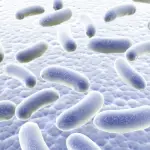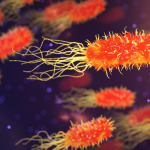Introduction:
DNA stands for Deoxyribonucleic Acid and structurally is composed of long double strands of nucleotides. The DNA functions as storage of genetic information and significantly helps in transmitting genetic information across generations. The RNA refers to Ribonucleic Acid and helps in executing the guidelines that are contained in an organism’s DNA. RNA also helps in transferring the genetic code and is used to create new proteins from the nucleus to the ribosome. The RNA is single stranded in structure. Both the RNA and DNA have similar phosphate backbones and bases. The difference between RNA and DNA is the sugars which is present in these nucleic acids.
The Difference between the Sugars in DNA and RNA:
The deoxy ribose sugar in DNA is replaced by the pentose sugar called ribose in the RNA. The following are some of the differences between the two sugars in DNA and RNA.
Fig. 1. Diagram of Deoxyribose sugar and Ribose sugar
- The principal difference between deoxyribose sugar and the ribose sugar is the OH (in 2’ carbon tail) of the ribose sugar molecule. This is absent in the deoxyribose sugar molecule and gives its name which can be understood as without an oxygen atom. The difference in the presence of OH is in the 2’ carbon tail only and not in the 3’ carbon tail as we can see in the picture.
- The absence of this oxygen atom plays a role in the stability and longevity of the DNA molecule. This is very significant as DNA molecules contain genetic makeup of an organism and should be stable and not susceptible to decomposition. The lack of an oxygen atom helps the DNA’s stability while the presence of the same helps the RNA to degenerate as soon as its function is completed.
- The molecular formula of ribose is C5H10O5 and the molecular formula of deoxyribose is C5H10O4.
- Ribose is a regular sugar molecule. However, deoxyribose sugar is a modified form of the ribose sugar. In other words one oxygen atom is removed from the ribose sugar to form deoxyribose.
- Ribose sugar is composed of three chiral structures which facilitates the ribose sugar to have 8 different stereoisomers. However, only two enantiomers (these are identical stereoisomers which cannot be superimposed on each other) are possible in the case of deoxyribose.
- In deoxyribose sugar out of the five carbon atoms four of them and a single oxygen atom form a ring. The remaining carbon becomes a part of the CH2 The ribose sugar has oxygen atoms attached to each of its five carbon atoms.
- The Ribose molecule has free –OH (hydroxyl) groups on carbon atoms 2’, 3’ and 5’. The phosphate attaches itself to any of these three positions to form nucleotides. So, it is possible to form 3 ribonucleotides. In deoxyribose there are only two –OH (hydroxyl) groups on carbon atoms 3’ and 5’. So only two deoxyribo nucleotides are possible in this sugar.
Conclusion:
Though there are differences between the sugars both of them are a part of the DNA and RNA which are nucleic acids which play a significant role in genetics of organisms. Both the sugars have some similarities too. The sugars present in both RNA and the DNA are monosaccharides and are pentose sugars (sugars which have five carbon molecules). They both play significant roles in passing down genetic blue print between generations. The differences in the sugars help in the appropriate functioning of the DNA and the RNA molecules and greatly helps the enzymes of a body to distinguish between them.










Leave a Reply